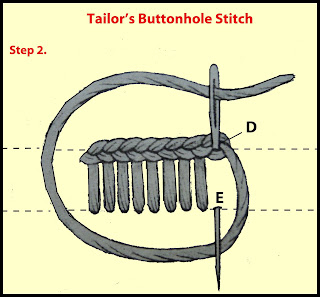Long and Short Satin Stitch consists of a first row of long and short vertical stitches followed by rows of long stitches. By subtle changes of color on each row, soft shading effects can be achieved.
Step 1. Come up at A, go down at B, up at C, and down at D. Continue alternating long and short stitches across row from left to right. Secure thread.
Step 1. Come up at A, go down at B, up at C, and down at D. Continue alternating long and short stitches across row from left to right. Secure thread.
Step 2. Repeat above step, this time working long stitches only across row to fill motif. The last row will require some short stitches.











































